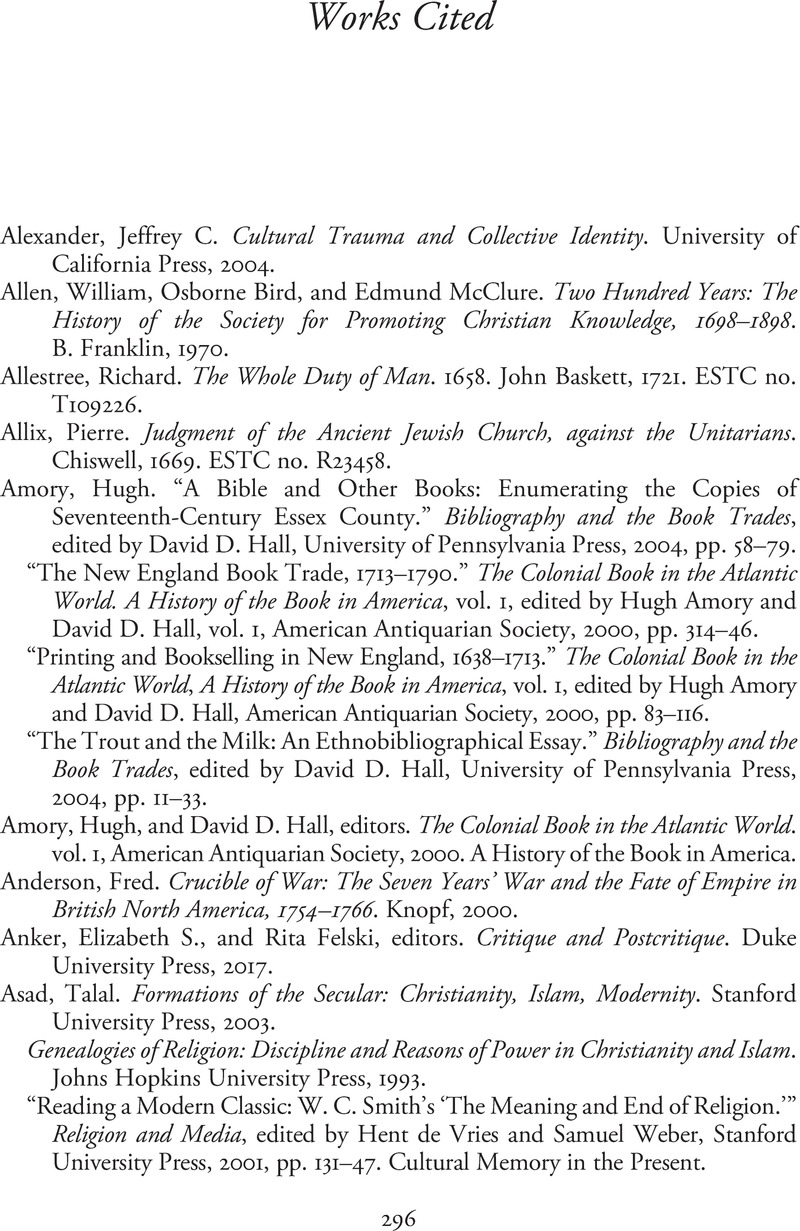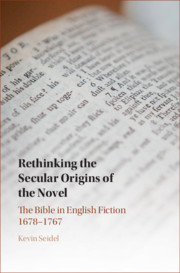Book contents
- Rethinking the Secular Origins of the Novel
- Rethinking the Secular Origins of the Novel
- Copyright page
- Contents
- Figures
- Tables
- Appendixes
- Acknowledgments
- Introduction
- Part I Rethinking the Secular at the Origins of the English Novel
- Part II Versions of Biblical Authority
- Part III Uses of Scripture for Fiction
- Appendices
- Notes
- Works Cited
- Index
- References
Works Cited
Published online by Cambridge University Press: 16 March 2021
- Rethinking the Secular Origins of the Novel
- Rethinking the Secular Origins of the Novel
- Copyright page
- Contents
- Figures
- Tables
- Appendixes
- Acknowledgments
- Introduction
- Part I Rethinking the Secular at the Origins of the English Novel
- Part II Versions of Biblical Authority
- Part III Uses of Scripture for Fiction
- Appendices
- Notes
- Works Cited
- Index
- References
Summary

- Type
- Chapter
- Information
- Rethinking the Secular Origins of the NovelThe Bible in English Fiction 1678–1767, pp. 296 - 319Publisher: Cambridge University PressPrint publication year: 2021



